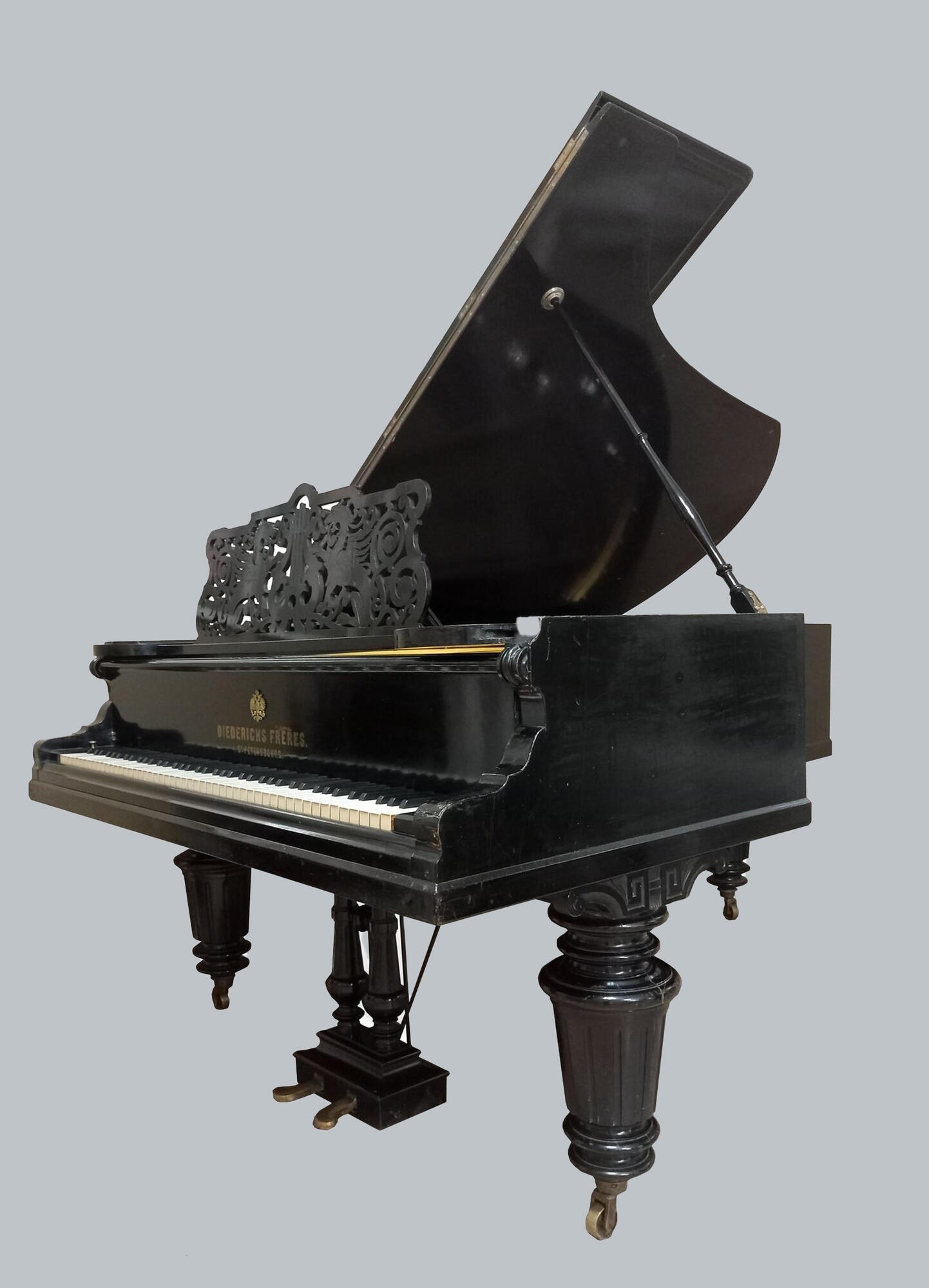The production of grand and upright pianos in Russia was established by Fyodor Fyodorovich (Friedrich) Diederichs (1779–1846), a musical instrument maker from the Duchy of Brunswick, Germany. In 1810, he established a small workshop on Vasilyevsky Island in St. Petersburg, which eventually developed into a large enterprise.
At the very beginning, the workshop produced only copies of Viennese instruments, replicating the features of their mechanisms, design, and even the piano finish. However, the craftsmen soon developed their own designs, including desk and table pianos.
In 1829, Diederichs presented his pianos at the St. Petersburg All-Russian Manufacturing Exhibition, setting their price at 500 rubles. The jury rated the instrument, giving it a second grade, and commented that it was “characterized by good craftsmanship… even though the keys are somewhat heavy for playing”. They also added that the price was too low for such a high-quality instrument.
The next owners of the company, Friedrich’s heirs Robert and Andrey, were professional piano makers. They also invited foreign experts, and the company’s business flourished. After 1878, the company became known as the R. and A. Diederichs Brothers and came up with the Diederichs Frères trademark. In the early 1880s, it produced up to two hundred boudoir, concert, and baby grand pianos a year.
While the price was relatively low, the factory’s grand and upright pianos were reliable and had a “nice and rich sound”. Diederichs Frères products were recognized with awards at numerous exhibitions. The firm existed until 1918.
The displayed piano is equipped with a double-escapement action and has a range of A2–a5. It has agraffe strings: 10 single-string basses, 10 two-string courses, and 68 three-string courses.
The piano once belonged to Princes Belosselsky-Belozersky who lived in St. Petersburg. During the Soviet period, the piano was confiscated and ended up in the city’s concert halls. However, in 1929, it was returned to the descendants of its first owners. In 1946, they were forced to part with the family heirloom; the piano was purchased and with great difficulty brought to Altai by Vasily Gridnev, a physics teacher from Rubtsovsk. Some time later the rare instrument ended up with Vladimir Primak, a teacher at the Rubtsovsk Music College.
Nikolay Zhiba, the craftsman who restored the piano, recalled that Primak “organized musical Fridays and invited… famous performers. Then we persuaded him to send the piano to Barnaul.”
Since 1991, the instrument has been part of the Altai
Museum’s collection. Just like a century ago and before, it is still played at
museum concerts.






